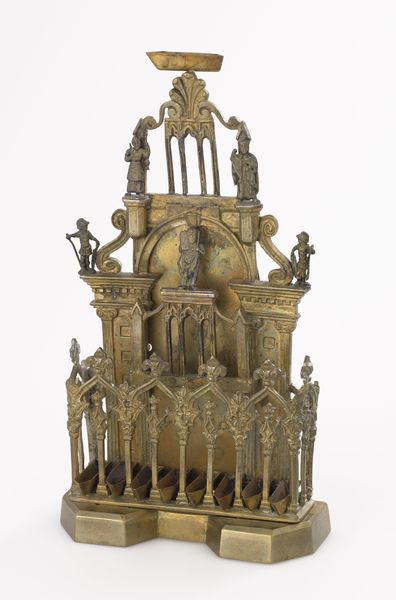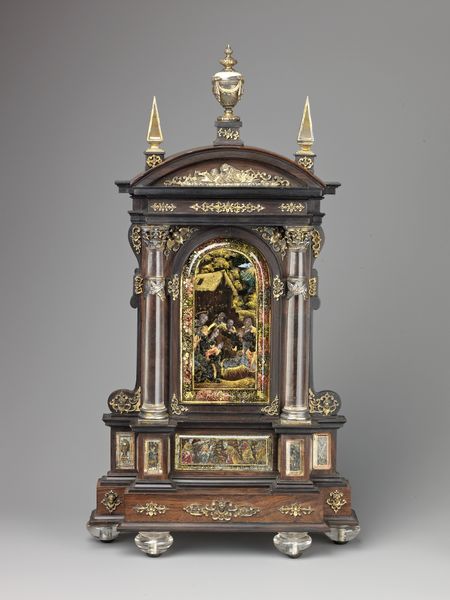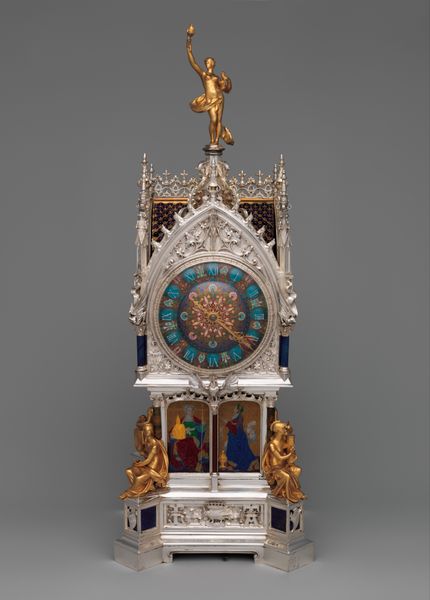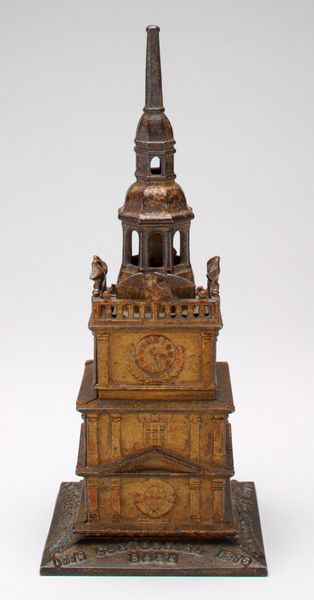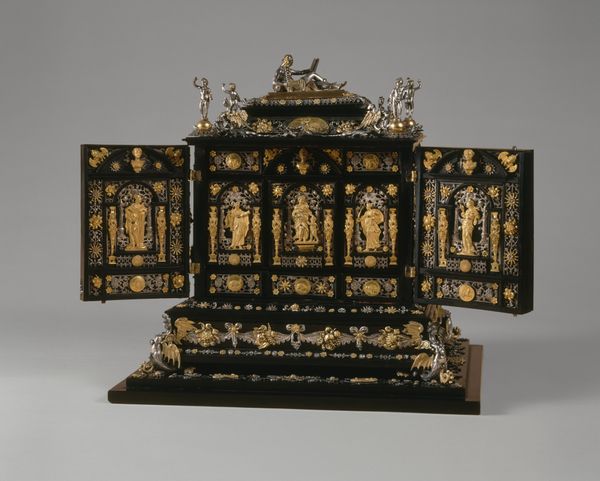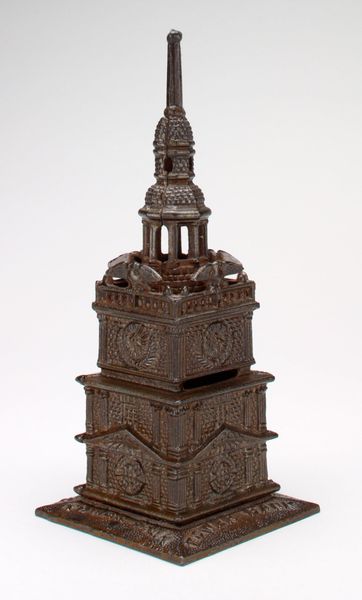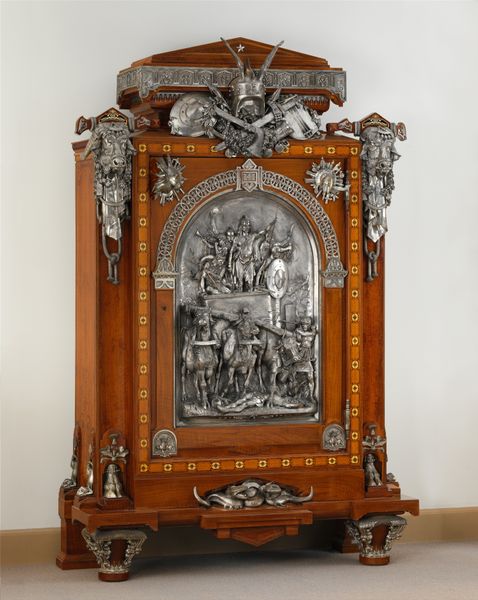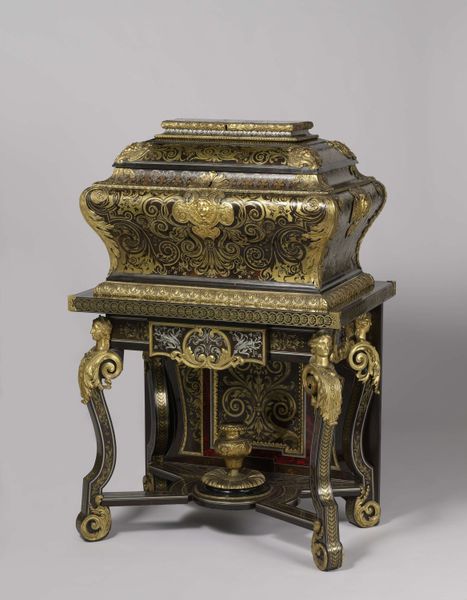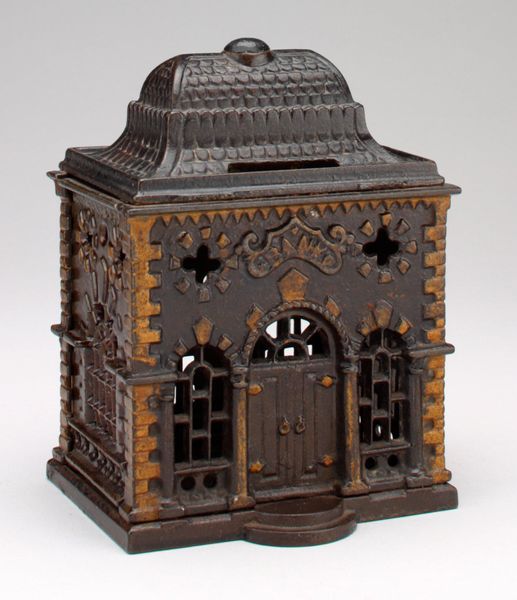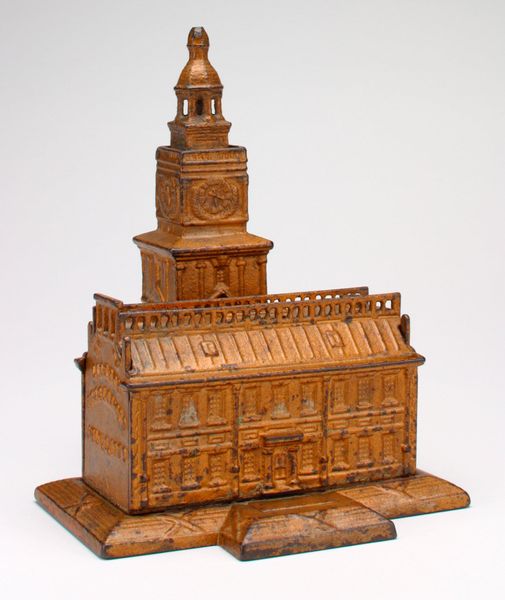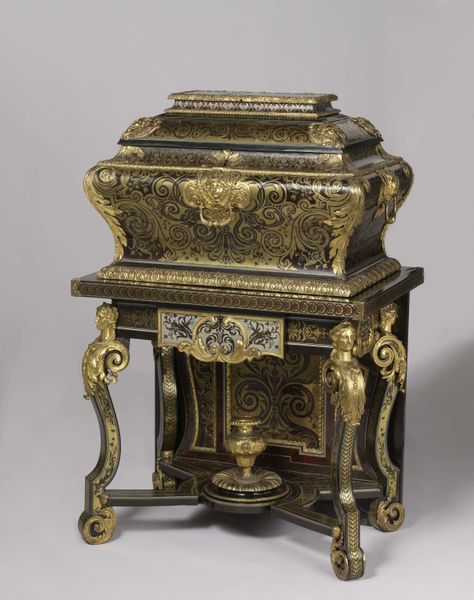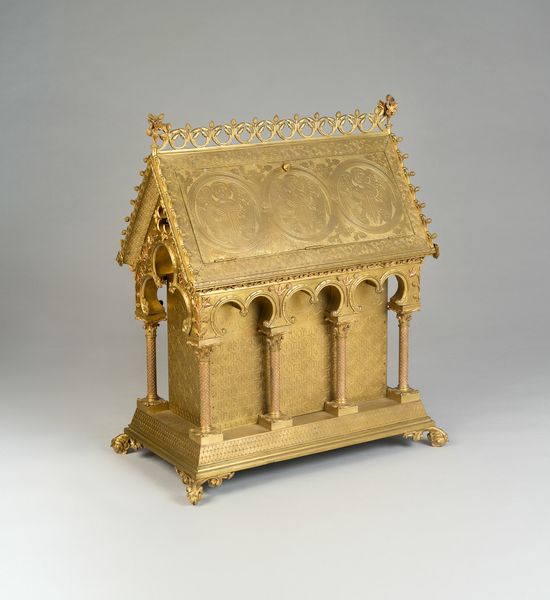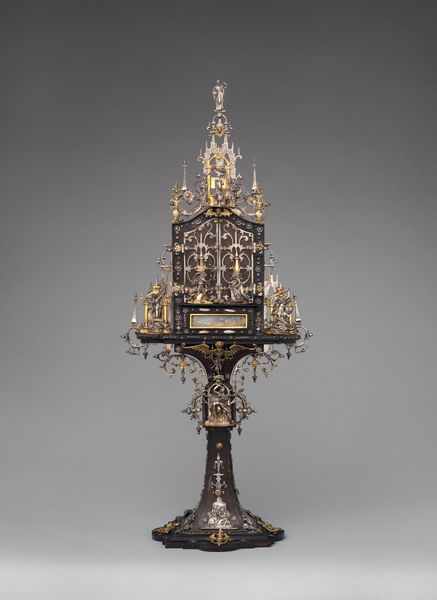
carving, sculpture, wood
#
carving
#
sculpture
#
asian-art
#
geometric
#
sculpture
#
architecture
#
wood
#
decorative-art
#
miniature
Dimensions: Height: 14 1/2 in. (36.8 cm)
Copyright: Public Domain
Curator: What an extraordinary object we have here. This "Miniature Cabinet or House Altar" was created sometime between 1871 and 1900, crafted from wood with intricate carving. It's currently housed at the Metropolitan Museum of Art. Editor: My initial impression is one of intense detail and hierarchy. The dark wood contrasting with gold leaf gives it a rather theatrical feel. Almost like a stage set. Curator: Precisely! The artist, Reinhold Vasters, seems to have been deliberately exploring different spatial planes and architectural elements in this decorative piece. Note the columns, arches, and miniature statuary – all meticulously rendered. Editor: It certainly speaks to the tradition of the wunderkammer, or cabinet of curiosities. I'm struck by the power dynamics implied in miniature. Who or what does this altar serve, and who is granted access? How did this level of decorative, spiritual objectification impact devotional practices of the time? Curator: That’s a valuable point to consider. We can delve into its formal construction further to unpack how it generates this "power." Notice, for instance, how the varying heights of the levels emphasize particular figures or scenes. This hierarchy isn’t just decorative, it's a way of encoding the perceived value of the scene or figure. Editor: Absolutely, and these choices invariably reflect the social and religious biases of its era. For example, the very act of miniaturizing something sacred runs the risk of trivializing it. Curator: Yet, at the same time, doesn't that miniaturization make it accessible and perhaps personalizes it to the commissioner? There is a certain paradox at play, where reduction in scale brings out intense concentration of forms, giving the altar object quality akin to jewelery. Editor: The commisioner perspective offers another interpretive possibility here; given its decorative flourish, the piece’s preciousness served, too, to amplify the commissioner's taste, status, and position as both a spiritual person and cultural observer. Curator: An excellent consideration! Thinking about it further now, there's such skill on display and, perhaps, that artistry and intent invites continued investigation on its own terms. Editor: Agreed. Analyzing decorative and spiritual artwork demands that we ask crucial questions regarding the nature of beauty and function, especially during times when its role had transformative political consequences across Europe.
Comments
No comments
Be the first to comment and join the conversation on the ultimate creative platform.
